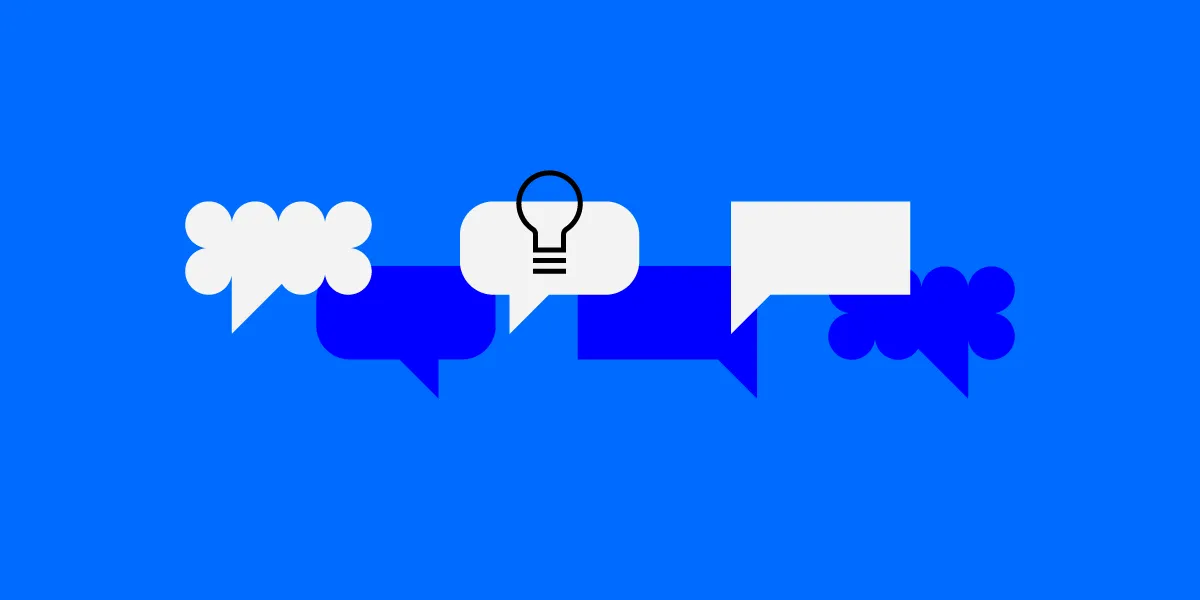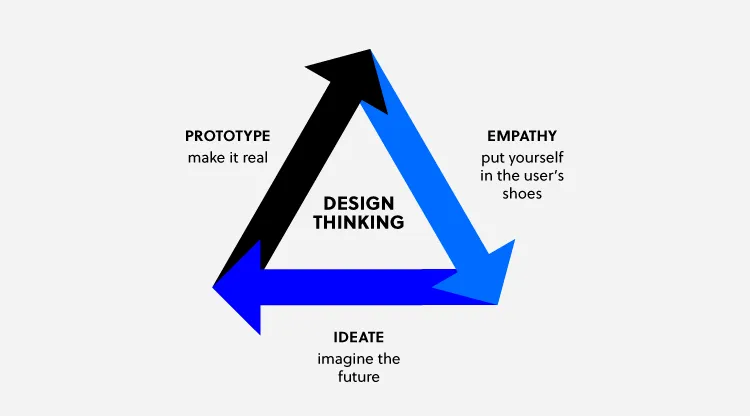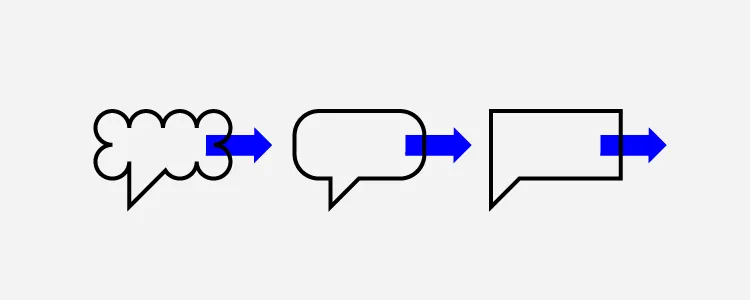How To Run A Successful Design Thinking Workshop

Running a design thinking workshop is one of the best ways to spark creativity and nurture a user-centric mindset within your design team. As a designer, you will encounter situations where you need to run design thinking workshops either with your team, your stakeholders, or other departments in your organization.
UXPin is an end-to-end design tool that will support you throughout the full human-centered design process, from creating basic user flows, through prototyping, and up to design handoff. Create a strong, transparent, and quality design process with UXPin. Enjoy a free trial.
What is a Design Thinking Workshop?
A design thinking workshop is a creative problem-solving session that is based on the principles of design thinking. These workshops are activity-based and they involve real-time collaboration. For that, they are often done in person but they can also be done remotely.
The activities of a design thinking workshop are organized according to the three phases of the design thinking process: empathy, ideation, and prototyping.
- Empathy: Developing a deep understanding of the problem that end-users face and empathizing with them.
- Ideation: Coming up with many ideas on how the user problem can be solved.
- Prototyping: Creating a prototype of potential solutions and then testing it with real users.

A workshop can last for a few hours long, a whole day, or even a week.
What are the goals of a Design Thinking Workshop?
Design thinking workshops help design teams to create feasible and user-focused solutions to complex problems in design. This helps the team to design better products faster, reduce costs, and increase profits.
Design Thinking Workshops typically have several key goals:
- Problem Understanding: The primary goal of a Design Thinking Workshop is to deeply understand the problem or challenge at hand. This involves empathizing with the users or stakeholders, defining the problem from their perspective, and gaining insights into their needs, desires, and pain points.
- Creative Ideation: Another key goal is to generate a wide range of creative ideas and solutions to address the identified problem. Through brainstorming sessions and other ideation techniques, participants are encouraged to think outside the box and explore unconventional approaches.
- Collaboration and Team Building: Design Thinking Workshops often involve interdisciplinary teams working together collaboratively. A goal is to foster teamwork, encourage diverse perspectives, and leverage the collective intelligence of the group to generate innovative solutions.
- Prototyping and Iteration: Participants in a Design Thinking Workshop create prototypes or mock-ups of their ideas to quickly test and iterate upon them. The goal is to rapidly learn from feedback, refine ideas, and improve upon them iteratively.
- User-Centric Solutions: Design Thinking emphasizes a human-centered approach to problem-solving. Therefore, a key goal of the workshop is to develop solutions that are deeply rooted in the needs and experiences of the end-users.
- Actionable Insights: By the end of the workshop, participants should have gained actionable insights into the problem space and potential solutions. These insights can inform future decision-making and guide further development efforts.
- Empowerment and Ownership: Design Thinking Workshops aim to empower participants to take ownership of the problem-solving process and feel confident in their ability to innovate. This can lead to a culture of creativity and innovation within an organization
Who should run a Design Thinking Workshop?

A design thinking workshop should be run by a facilitator, that is a person who understands the design thinking process and guides the participants throughout the workshop. The facilitator should have presentation skills and the ability to keep the group engaged. It would also be great if facilitator had a hands-on experience with running workshops.
If you need tips on facilitation, see our other article: How to be a facilitator.
How many people should be in a design thinking workshop?
The ideal number of participants for a Design Thinking Workshop can vary depending on factors such as the complexity of the problem, the scope of the workshop, and the resources available. However, a common range is typically between 6 to 12 participants.
Here are some considerations to help determine the appropriate number of participants:
- Diversity of Perspectives: It’s essential to have a diverse group of participants representing different backgrounds, expertise, and perspectives. This diversity fosters creativity and ensures that various viewpoints are considered during the workshop.
- Effective Collaboration: A smaller group size facilitates more effective collaboration and communication among participants. Larger groups may become unwieldy and make it challenging for everyone to actively contribute and engage in the process.
- Resource Constraints: Consider the resources available, such as facilitators, materials, and space. Ensure that the workshop can be adequately managed and supported with the available resources.
- Time Constraints: The duration of the workshop can influence the number of participants. With a larger group, it may take more time to ensure everyone’s voice is heard and to reach consensus on ideas and solutions.
- Scalability: If the workshop is part of a larger innovation initiative or project, consider whether the outcomes need to be scalable across different teams or departments. A manageable group size makes it easier to replicate the workshop format if needed.
Ultimately, the goal is to strike a balance between having enough participants to generate diverse ideas and perspectives while maintaining a manageable group size for effective collaboration and decision-making. Flexibility is key, and adjustments may be necessary based on the specific context and objectives of the workshop.
How to run a Design Thinking Workshop
The design thinking process is made up of activities that are done before the workshop and during the workshop. Here is a step-by-step plan of a design thinking workshop.
Step 1: Plan your workshop
Before you can run a design thinking workshop, there are some things that need to be in place first, they include:
- Workshop objectives: This is a clear definition of the goals that the workshop should achieve. Is it to generate new ideas or to improve on an existing design product? This is also a good time to define the challenge or question that the workshop will answer. It might be “how can we improve the user experience of our website users?”
- Workshop location: Choose a suitable location for your design thinking workshop. If the workshop is happening physically, choose a location that has enough space for your design team. If the workshop is happening online, decide on the meeting and presentation tools that you are going to use.
- Workshop agenda: This is a plan of how and when the different activities are going to happen. Do not make the workshop too long and be sure to include a lot of activities in your design thinking workshop agenda.
- Workshop toolkit: Ensure that all the necessary design thinking workshop materials such as paper, marker pens, post-it notes, whiteboards, and props are in place.
After making all the necessary preparations as outlined above, the next steps will be the execution of your workshop agenda.
Step 2: Introduce participants to the idea
Welcome all the participants to the workshop and brief them on what they should expect during the workshop. Share the following information:
- The main objective of the workshop and the problem that it is going to solve.
- A schedule of the workshop activities.
Step 3: Kick off the meeting using an icebreaker
Use fun icebreaker activities to help your team warm up before the workshop begins. This will make it easy for them to collaborate and share their ideas with team members.
Step 4: Begin design thinking session
Make a brief presentation on what design thinking is, the phases of design thinking, and its benefits. This presentation is useful even for designers who are already familiar with the design thinking philosophy because it brings everyone up to speed and ensures that you are all on the same page.
Step 5: Empathize with the user
This is the first step in the design thinking process where you encourage the workshop participants to put themselves in the shoes of the user. This will help them to start generating ideas on what the user needs from the product.
What can help you empathize with the end-user? You can use activities such as role-playing and creating an empathy map to help the participants really understand the needs, wants, feelings, and language of the user. After these activities, give the participants a chance to share their findings and ask questions, if any.
The output of this step could be creating user personas. Read more about it here: Personas in UX.
Step 6: Get more specific on the problem
After the empathy exercise, participants are better placed to really narrow down on the problem that the user faces. Ask your team to create a problem statement that will guide the rest of the design thinking workshop.
Step 7: Come up with ideas and possible solutions
The next design thinking step is ideation where your team suggests possible solutions to the problem that they identified in step 6. Use techniques such as brainstorming to come up with a list of potential solutions.
Give the participants a chance to discuss their solutions and then come up with one refined solution.
Step 8: Create a user journey map
After settling on one solution, get your team to map out the steps that users will take so that they can solve the problem. These steps can be downloading an application, setting up an account, adding their bank details, and then sending money. Give them enough space and sticky notes to create a step by step representation of the user journey.
Step 9: Create prototype and test it
This is the final step in the design thinking process where participants will create low fidelity prototypes of their solution. Ask the users to create screens for each step of the user journey and then ask them to add functionality to their screens in the form of buttons.
Once again, give your team some time to compare their prototypes and then ask them to vote for the best prototype.
Step 10: Describe the next steps and close the workshop
Close the workshop by explaining to your team the next steps such as turning their prototypes into wireframes, high fidelity prototypes, and actual user testing.
This is also a good time to ask your design team what they learned from the design thinking workshop. Don’t forget to ask for feedback so that you can improve your design thinking workshop facilitation skills.
Solve design challenges with the best design tools
Design thinking workshops help your design team to come up with innovative and user-centered solutions to design problems. Use UXPin to design, wireframe, and prototype the innovative ideas that you come up with during your design thinking workshop. Sign up for a free trial of UXPin and turn your ideas into wonderful designs.




